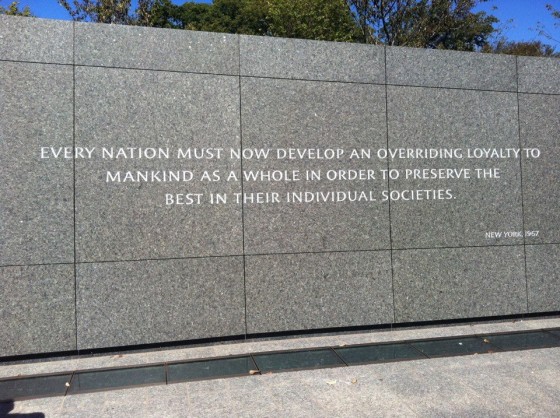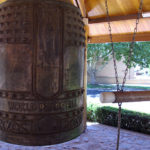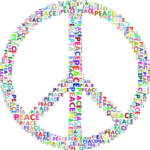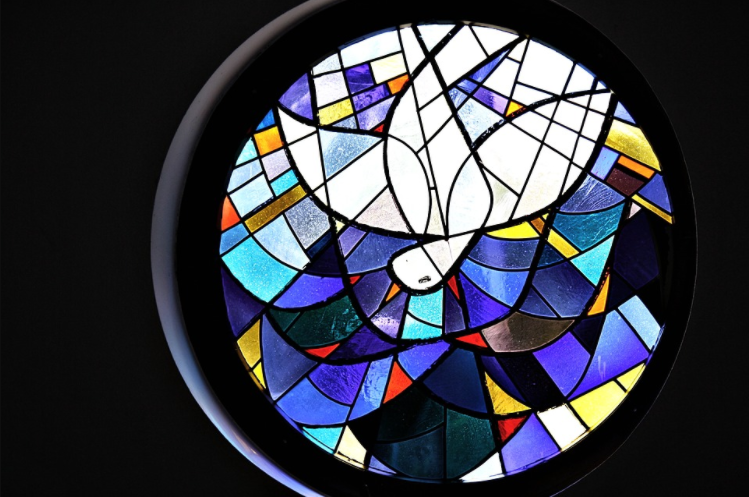
Try finding peace

The world seems to be searching for peace at the moment; but seems to be having a hard time finding it. At least, this is what you may come to believe if you follow the news. Maybe we’re looking in the wrong places.
Have you every tried to search for “peace” news? Scan either the Google or Bing news feed for “peace” and for page after page mostly what you find is “war”. So by “peace” we seem to mean “war”. No wonder we’re having a hard time finding peace.
Of course these search engines are just mirrors of ourselves. The engines prioritise news about war against peace searches, because this is the connection we keep reinforcing in how we behave online, what we click, what we write. Even here the opposite of peace is mentioned repeatedly. We focus on the absence of peace when thinking about peace. Collectively, we rarely take the time to really seek out the stories that are about how peace is built, how enemies become friends, how dispute becomes agreement, how we can navigate towards a world that is truly peaceful.
Our media is a reflection of us in the same way. Rather than informing us what we choose to read can merely reflect back to us our own fears. Nonetheless, listen to the news on any given night and it will be a stream of stories responding to our fears: often about human violence, often narratives justifying the use of force, justifying the allocation of more and more of planet’s scarce and finite resources in continuing those patterns. Paradoxically despite these seemingly endless efforts to maintain or restore peace, our sense of security seems to be slipping further and further away.
Mostly the single solution we seem to hit upon in the face of violence is more violence. Yet we see that violent responses to violence are often abject failures in their goals. Such endeavours are full of risk and often generate pathological behaviours even worse than those they were supposedly meant to cure. “Hitler” became Hitler in the trenches of World War I. Before that he was mostly likely a man without a future who would not have been involved in bringing great harm to the world. Trace the line of causation from strategies to oppose the Soviet Union in Afghanistan in the 1970’s to the virulent violence of today and the conclusion is clear: warfare and its associated strategies are a potent danger to the world and cause more harm than good. Perhaps there is something wrong with how our societies think about these issues. If we are to have a peaceful future perhaps new strategies are needed. Attention needs to be turned away from war and towards peace. Ironically, in many parts of the world, we are good at peace at national and sub-national level. What are we doing differently at global level that makes peace so elusive?
Yet night after night the news will barrage us with tales of mistreatment, horror and violence, whether in our neighbourhoods or in the world. For the time we choose to subject ourselves to it, we are implicitly (and explicitly) told our fellow human beings are evil monsters who want nothing more than to kill, harm or exploit us or our children. If we are lucky we might get a 30 second ‘feel good’ story to comfort us after the psychological bombardment that has preceded it. What does such a barrage do to our clarity of thought? Our ability to see human beings as they really are?
The same patterns occur in our top billing movies. Too often our movies reinforce the same models of violence: the “hero” (and now increasingly “heroine”) who over and over again must use violence against an evil nemesis to solve whatever problem is at hand and to ‘win’. Movies which celebrate the human spirit, movies like Belle, are less likely to be found among the most watched movies. Our male teenagers are likely to spend hours a week, if not per day, absorbed in virtual worlds in which the sole objective is to violently confront and destroy imaginary digital enemies.
Might it be reasonable to ask whether these patterns are right? Whether such a prevalence of non-peaceful matter is likely to make our world, well, less peaceful?
What does the real world look like? For most of us, most of the time, what is our own direct lived experience of our fellow human beings? Most of the time people we meet are mainly friendly, helpful, loving, caring of their communities, families and friends. Most people love peace and agreement and dislike conflict and behave accordingly. Most of the time this is true for our own experience. Multiply that experience by 7 billion and that is more likely to be a true picture of humanity.
Statistics bear up this picture as a more accurate model of reality. Despite the wall to wall “war” coverage, the most likely causes of death for human beings are not war. War and violence are somewhere further down the list. The top ten causes of death for human beings are related to health and accident. In order these causes of death are: ischaemic heart disease, stroke, lung diseases, HIV/AIDS, diarrhroeal diseases, diabetes, road injury, hypertensive heart diseases. The greatest danger most of us are likely to face in our own lives, is not what other human beings may do to us, but rather what we may be doing to ourselves in our everyday behaviours.
Of course wars do affect people and are affecting far too many right now. The numbers of refugees bear this up. The tragedy of the human suffering involved is unspeakable. It is not enough to ignore it. It’s for that very reason that new solutions must be urgently sought. Violence is not a solution, and never was. What is clear is that to condemn succeeding generations to endlessly repeat the mistakes of current and previous generations is an entirely inadequate response. Ending or addressing a present conflict is not a solution, it is just a repetition of past behaviours that guarantee more future violence and more human suffering. Solutions must be sought so that warfare is made a thing of the past. One factor is how we make foreigners of our fellow human beings, whether in a literal legal sense, or in a metaphorical sense: `others’ against whom the use of force can be justified.
So, allowing for the difficulty of actually finding the real peace news, news from which we may draw useful insights: here is a short selection of stories that really are about peace and how it is made. Let’s find the real news about peace, and share it around. It’s needed.
I will write peace on your wings and you will fly all over the world. Sadako’s story and the thousand cranes.
Jeanette Who? “I felt the first time the first woman had a chance to say no against war she should say it.” The story of Jeanette Rankin.
Countries agree to renounce war! “the settlement or solution of all disputes or conflicts of whatever nature or of whatever origin they may be, which may arise among them, shall never be sought except by pacific means.”
Wikipedia has a long list of peace organizations, a list of non-violence organizations and a list of anti-nuclear organizations.
There must be literally thousands of organizations working for peace. Yet their voices so rarely heard. We may have something to learn from them.









One Comment
Neil Frye
Brilliant and well written article. Many thanks.
Neil.
Serenity Africa. (and soon to be Peace Day inspires…)